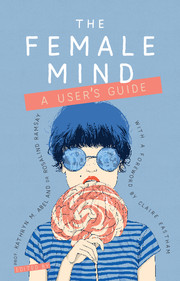Book contents
- Frontmatter
- Acknowledgements
- Contents
- Foreword
- Introduction: being female
- Part I Women in perspective
- Part II Women and society
- Part III Women and their environment
- 10 Emotional well-being and staying well
- 11 Sensitive motherhood
- 12 Religion and spirituality
- 13 Linking physical and mental health in women
- 14 Obesity
- 15 Women and sleep
- 16 Women and pain
- 17 Bereavement, loss and grief
- Part IV Women and specific disorders
- Part V Women and treatment
- Contributors
- Index
11 - Sensitive motherhood
from Part III - Women and their environment
Published online by Cambridge University Press: 02 January 2018
- Frontmatter
- Acknowledgements
- Contents
- Foreword
- Introduction: being female
- Part I Women in perspective
- Part II Women and society
- Part III Women and their environment
- 10 Emotional well-being and staying well
- 11 Sensitive motherhood
- 12 Religion and spirituality
- 13 Linking physical and mental health in women
- 14 Obesity
- 15 Women and sleep
- 16 Women and pain
- 17 Bereavement, loss and grief
- Part IV Women and specific disorders
- Part V Women and treatment
- Contributors
- Index
Summary
Parenting: a natural instinct
Parental sensitivity is a natural instinct (Kringelbach et al, 2008). When any adult hears a baby cry, she or he will have an emotional reaction (although the emotional reaction might be stronger in women than in men; Sander et al, 2007). This natural instinct was demonstrated in a study in which adults were asked to look at images of infants and adults (not from their own family or group of friends) while a magnetic resonance imaging (MRI) scanner measured the blood flow in different parts of their brains. When the image was of a baby, there was a lot of activity in the frontal and temporal parts of the brain; these areas are involved in planning complex behaviours (Kringelbach et al, 2008). When the image was of an adult, there was no such activity.
The fact that parental sensitivity is so natural means that it does not require conscious effort. It is something we can literally do without thinking. A sensitive mother is getting on with her life, but has in-built ‘antennae’ that allow her to be ready for action if her child is in need. The best example of this is the play park, where you will often see two women engrossed in a conversation with each other on a park bench, while their young children are absorbed in play. These women are not ignoring their children: they each have an ‘ear out’ for trouble. If a scary dog came into the park, the children would abandon their play and run towards their mothers. The mothers (if sensitive) would immediately abandon their conversation, in mid-sentence if necessary, and hold out their arms for a hug and some soothing words. Only when the crisis is over, and the children are once more engrossed in play, will the conversation between the friends resume.
Things that can block sensitivity
So what might get in the way of a mother being sensitive to her child? Anything that preoccupies the mind enough to stop the antennae from working. If there is insufficient support from family/friends, or complicating factors, mothers may find it difficult to be sensitive (Kivijärvi et al, 2001; Ensink et al, 2016).
- Type
- Chapter
- Information
- The Female MindUser's Guide, pp. 71 - 76Publisher: Royal College of PsychiatristsPrint publication year: 2017

